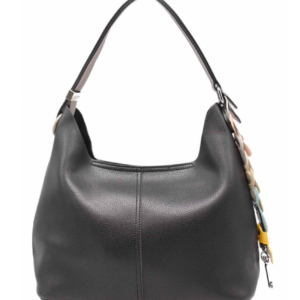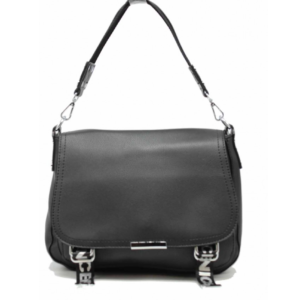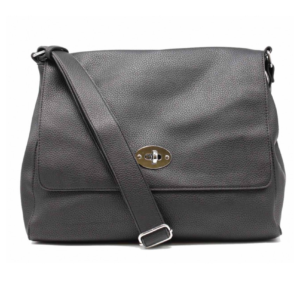After a brief introduction in which Reich defines what the Socratic method is (and what it is often mistaken for), he helpfully breaks down the method into specific components, and then offers tips for how to use it in the classroom. 3. He then followed up each suggestion provocatively, pushing each speaker to defend and articulate the reasons and values underlying their decision (is it better to save the many at the expense of the few? It is from the newsletter, Speaking of Teaching, produced by the Center for Teaching and Learning (CTL), Stanford University , http://ctl.stanford.edu/Newsletter/ Fall 2003, Vol. You may have experienced Socratic seminar in a college course, but you’re unlikely to forget the first time you successfully played the Socratic game in law school. Be willing to say, "I don't know the answer to that question.". Last Updated: April 8, 2021 References Approved You can use the Socratic method to show someone that they are wrong, or at least imprecise, by getting them to agree with statements that contradict their original assertion. For instance, instead of discussing how to apply justice in diverse social settings, a group of students may discuss the basic concept of justice itself. .". Some law students find the process intimidating or humiliating—a la John Houseman’s Oscar-winning performance in "The Paper Chase"—but the Socratic method can actually produce a lively, engaging, and intellectual classroom atmosphere when it's done correctly by a great professor. © Stanford University, Stanford, California 94305. 2. Sounds easy, right? ‘argument of disproof or refutation; cross-examining, testing, scrutiny esp. The leader of Socratic inquiry is not the purveyor of knowledge, filling the empty minds of largely passive students with facts and truths acquired through years of study. It can be used to get to the truth or convince/persuade someone with subtlety. Why is it used? The Socratic method is one of the most famous, least used, and least understood teaching and conversation practices. David Hansen, "Was Socrates a 'Socratic Teacher?'" The "teacher," or leader of the dialogue, asks probing questions in an effort to expose the values and beliefs which frame and support the thoughts and statements of the participants in the inquiry. In this brief clip, R.C. The Socratic Method is a form of dialectical inquiry (i.e. This is the kind of episode that has … If the professor gave all the answers and broke down the case himself, would you really be challenged? The Socratic method focuses on moral education, on how one ought to live. Get students to account for themselves, not just to regurgitate readings and lectures. Break this down if at all possible. The net result is to substitute articulate hesitation for inarticulate certainty.". The goal is for students to solidify their knowledge of the case by thinking critically under pressure. Socratic method - A teaching technique in which a teacher does not give information directly but instead asks a series of questions, with the result that the student comes either to the desired knowledge by answering the questions or to a deeper awareness of the limits of knowledge. Elenchus (Ancient Greek: ἔλεγχος, translit. "If you ask a question or series of questions in which your respondent can readily agree, then ask a concluding question based on those agreements, you will receive a desirable response". In his talk, Professor Reich discussed the Socratic method of teaching-a method which has encountered some criticism in recent decades but is also acknowledged as the foundation of Western pedagogical tradition. In the Socratic method, the Socratic professor is not the opponent in an argument, nor is he or she someone who always plays devil's advocate, saying essentially: "If you affirm it, I deny it. As with most of the other talks in the Award Winning Teachers on Teaching series, a videotape of Professor Reich's talk is available for viewing in the video library at the Center for Teaching and Learning, on the fourth floor of Sweet Hall. Essential components of the Socratic method. Furthermore, the inquiry is open-ended. The Socratic method forces students to define, articulate, and apply their thoughts. The posting below looks at Socratic method in teaching . The Socratic method can be used at any grade level and with all subject areas, and lessons can be adapted to fit a changing society. In the Socratic method, there are no lectures and no need of rote memorization. It works for any topics or any parts of topics that have any logical natures at all. "How the Socratic Method Works and Why Is It Used in Law School." Retrieved from https://www.thoughtco.com/what-is-the-socratic-method-2154875. * Explain that participation requires listening and active engagement and that it is not enough to just insert a single comment in class and then be silent for the rest of the day. ThoughtCo, Aug. 25, 2020, thoughtco.com/what-is-the-socratic-method-2154875. The Socratic method helps us live a good life Socrates used his strategy as a guide to help people explain that they did not understand what they thought they did. Brevity and short interventions from the professor are most welcome. While Reich's model of the Socratic method is not based entirely on Socrates's methods in Plato's dialogues, it is a long way from the confrontational humiliation that has become mistakenly associated with the Socratic approach. The method is still popular in legal classrooms today. By using ThoughtCo, you accept our. The Socratic method represents the core of an attorney's craft: questioning, analyzing, and simplifying. The Socratic method is a form of cooperative argumentative dialogue between individuals, based on asking and answering questions to stimulate critical thinking and to draw out ideas and underlying presumptions. He also offers an excellent model of the Socratic method in practice. The Socratic Method is one of many tools we use to help our students become lawyers. Professor Reich encouraged the audience to creatively reclaim the Socratic method as a relevant framework for actively engaging students with the critical thinking process. Use the "ten-second wait" rule before you attempt to re-phrase your questions! 6. a conversation between two people to examine a philosophical proposition) where one person (generally the teacher) takes the role of the questioner and the other (usually the student) answers the questions to the best of their ability. The Socratic method is possible in a class as large as 70. 1. with some contemporary examples of the method applied in elementary through high school classes. * Emphasize that students should focus their comments on concepts or principles, not first-person narratives. Socrates sought to expose contradictions in the students’ thoughts and ideas to then guide them to solid, tenable conclusions. Many lawyers will never enter a courtroom as advocates, but they will counsel clients, devise strategies for legal challenges to social institutions lik… Instead, the Socratic professor knows his or her students' names, and the students know each other's names. 4. When asked if he ever asserts his own views in the classroom, Professor Reich responded that he usually waits until the discussion has run its course and even then he might engage in a bit of "pedagogical deception" (taking a position he might not necessarily hold) in order to push students to examine their own premises. History of the Socratic method An ancient form of discourse, the Socratic method is over 2400 years old and is reportedly founded on Socrates’ belief that lecture was not an effective method of teaching all students. "How the Socratic Method Works and Why Is It Used in Law School." So what can you do when your law school professor fires that first Socratic question at you? Don't be a sage on the stage, or a guide on the side. As agile trainer Scott Duncan shared with the Scrum Master Toolbox podcast, it emphasizes "asking people what they think about things rather than telling them what they ought to think." The most common adjectival form in English is elenctic; elenchic and elenchtic are also current. Socrates is famous for saying "the unexamined life is not worth living." https://www.thoughtco.com/what-is-the-socratic-method-2154875 (accessed April 20, 2021). Through questioning, the participants strive first to identify and then to defend their moral intuitions about the world which undergird their ways of life. The Socratic method is better used to demonstrate complexity, difficulty, and uncertainty than at eliciting facts about the world. Elenchus (Template:Lang-grc) is the central technique of the Socratic method.The Latin form elenchus (plural elenchi) is used in English as the technical philosophical term. Equally true, though less appreciated, is the fact that the unlived life is not worth examining. The Socratic method demands a classroom environment characterized by "productive discomfort.". Simply listening to a Socratic method discussion can help you even if you're not the student who is called on. The principle underlying the Socratic method is that students learn through the use of critical thinking, reasoning, and logic. The first time is often difficult for everyone, but you may actually find the process exhilarating after a while. Answer key below. The aim is not to strike fear in the hearts of students so that they come prepared to class; but to strike fear in the hearts of students that they either cannot articulate clearly the values that guide their lives, or that their values and beliefs do not withstand scrutiny. after Greek philosopher Socrates who taught students by asking question after question. Gregory Vlastos, ed., The Philosophy of Socrates, Notre Dame: University of Notre Dame Press, 1971. The Socratic method is named after Greek philosopher Socrates who taught students by asking question after question. This often rapid-fire exchange takes place in front of the entire class so students can practice thinking and making arguments on their feet. The Latin form elenchus (plural elenchi) is used in English as the technical philosophical term. No speeches or long lectures. Stanford students are too practiced at "doing school" and discovering what they need to know to get by. Thus, practitioners of the Socratic method may want students to know facts, but they want to focus more on what the student thinks about these facts, not what others think! * Learn student names and have the students learn each other's names. The Socratic Method is a way through your own lights to search for truths. Neither does the Socratic professor possess all the knowledge or the answers, nor is he or she "just testing" the students. This technique involves finding holes in their own theories and then patching them up. The Thurston Conservation District's removal, via the State Commission, begins its next stage. Most lawyers can probably tell you about their shining Socratic method moment. Just use more small groups. 5) A circle is an enclosed shape. Doing all this successfully in front of others for the first time is a memorable moment. for purposes of refutation’) is the central technique of the Socratic method. Generally, this pattern continues until a question is posed to which the student cannot answer, generally because it would contradict an answer they gave earlier. Socrates believed that … When my professor intro… Tomorrow's Teaching and Learning 1. It is named after the renowned Greek philosopher Socrates. That is, rather than making arguments or asking questions designed to convince any or all people, all comments in a Socratic inquiry are directed at specific participants in the discussion. By surfacing knowledge that was previously outside of our awareness, the technique produces insightful perspectives and helps identify positive actions. How is it used? Educational. Silence is productive. MPM embraces the socratic method. At the end of his talk, Professor Reich gave an example of an exercise in Socratic method in which he posed a moral dilemma to his audience (you are the conductor of a train that has lost its brakes and you have to make the choice to either kill five workers on the tracks of an alternate route, or risk killing all 300 passengers on the train) and asked them to make arguments for what should be done. The Socratic method is a mutual conversation between individuals that is focused on asking and answering questions in order to promote critical thinking. he or she will reply, 'What a silly question! Law Degree Timeline, 12 Best Pre-Law Schools for Future Lawyers, 10 Do's and Don'ts for Note Taking in Law School, Biography of Ruth Bader Ginsburg, Supreme Court Justice, B.A., English and History, Duke University. But the Socratic Method is an important part of modern law teaching. ", ThoughtCo uses cookies to provide you with a great user experience. It's no use citing authorities. 13, No.1. It’s important to remember that professors aren’t using the Socratic seminar to embarrass or demean students. It can be gratifying to single-handedly bring your class to the one nugget of information the professor was driving at without tripping on a hard question. Use the Socratic Method to test the following definitions/knowledge claims. Be willing to wait for students to respond. The Law School Applicant’s Guide to the Diversity Statement, The Differences Between Law School and Undergrad, How Long Is Law School? Find ways to produce "productive discomfort." The professor is a participant in dialogue, and must always be open to learning something him- or herself. But what is the Socratic method? Socrates believed that living a good life was to live with virtue, rather than seeking personal wealth, power and status. Fabio, Michelle. The Socratic method of teaching questions critical thinking by tearing down old ideas and replacing them with new ones. The Socratic method, often described as the cornerstone of Cognitive Behavioral Therapy (CBT), solves this inadequacy by asking a series of focused, open-ended questions that encourage reflection (Clark & Egan, 2015). How the Socratic Method Works and Why Is It Used in Law School. The Socratic Method is a didactic dialogue of questioning concerned with examining the position of every participant in the dialogue. It also helps them master the art of speaking in front of large groups. Gregory Vlastos, Socratic Studies, Cambridge: Cambridge University Press, 1995. 4) Justice is saving the maximum number of lives. It is not to be supposed that, when our inquiry is finished, we shall have arrived at anything radically different from this un-philosophical position. In each round of questioning, Professor Reich tried to focus on breaking down the assumptions of the respondents in an effort to "build truth back up"-which is exactly the task of the Socratic professor in the classroom. Say only what you need to say to get your point across. The world of education is one of the areas in which it can be applied, being another of them the health field. In law school specifically, a professor will ask a series of Socratic questions after having a student summarize a case, including relevant legal principles associated with the case. 8. The Socratic method, continuous question asking, forces you to think clearly and rationally. ThoughtCo. The objective of this method varies. Today’s Socratic Method variations are applied in such different fields as education, law, and psychotherapy, but anyone can use it. Above all else, use follow-up questions! Refutation of one's beliefs about how best to live delivers an implicit verdict that, to paraphrase Rilke's poem, "The Archaic Torso of Apollo" (1908), you must change your life. Finally, don't be scared of size! Cold-calling works, but temper it with small group work so students can talk to their neighbor. Socratic inquiry is emphatically not "teaching" in the conventional sense of the word. In the Socratic method, also known by the Greek word “elenchus,” students discuss a question under the guidance of a teacher in order to come to a factual and faithful conclusion. Socrates left us with the socratic method, a philosophical tool that is excellent for questioning why we think the way we do, and deciding whether or not our beliefs are realistic and constructive, or unrealistic and destructive. The Socratic method is a different style of education than a lecture because it relies on dialogue or Dialectic between teacher and student. 9. First-year law students should take comfort in the fact that everyone will get his or her turn on the hot seat—professors often simply choose a student at random instead of waiting for raised hands. Set in a fictional law school and written by a California attorney, the independent comedy feature The Socratic Method follows the exploits of three first-year law students as they stagger their way through the pressure cooker that is legal education in America. The Thurston County Superior Court overturned the State's removal decision. It is not the only method of teaching we use at the University of Chicago Law School; instead we calibrate our teaching techniques to fit our abilities, the nature of the material, time constraints, and other factors. ---------------------------------------- 1,864 words ----------------------------------------, The Socratic Method: What it is and How to Use it in the Classroom. There is no pre-determined argument or terminus to which the teacher attempts to lead the students. Socratic Method Exercise. His father was Sophroniscus, a stone cutter, and his mother was Phaenarete, a midwife. 5. . SOCRATIC METHOD is one of the first season's more intense episodes, in which a mother with serious health problems is thought to have substance problems. The Socratic method focuses on moral education, on how one ought to live. elenkhos, lit. The Socratic professor aims for "productive discomfort," not panic and intimidation. Welcome the "crazy idea" that offers a new perspective on the topic, but discourage those ideas which are not serious. If you say to a person untrained in philosophy, 'How do you know I have two eyes?' The Socratic Methodis the process of guided learning and facilitated discussion through disciplined inquiry. If you’re familiar with philosophy or classics, you’re bound to have seen the name ‘Socrates’ mentioned once or twice. Method [edit | edit source]. Through questioning,... 2. In the Socratic method, the classroom experience is a shared dialogue between teacher and students in which both are responsible for pushing the dialogue forward through questioning. As Socrates says often in Plato's dialogues, he is primarily concerned with how one ought to live. The students ask questions as well, both of the teacher and each other. Without a lesson plan, the group follows the dialogue where it goes. The Socratic method offers us a way to stay faithful to open organization values. The Socratic method uses questions to examine the values, principles, and beliefs of students. Even if you feel you were unsuccessful, it might motivate you to study harder so you're more prepared next time. But neither, as you might expect, is the Socratic teacher "the guide on the side.". This happens sometimes, but not as a matter of pedagogical principle. I can see you have.' Professors use the Socratic method to keep students focused because the constant possibility of being called on in class causes students to closely follow the professor and the class discussion. In the best of Socratic dialogues, there is real tension among the interlocutors. Nor does he or she create a cult of personality by seeming aloof, cold, and distant. House suspects something far more peculiar going on, and has his team check out the woman's home for possible contributing factors. It does not work for unrelated facts or for explaining conventions, such as the sounds of letters or the capitals of states whose capitals are more the result of historical accident than logical selection. The fourth and fifth sections focus The Socratic method uses questions to examine the values, principles, and beliefs of students. It is, at least in theory. Always be open to learning something new. The method of teaching is also dramatic and entertaining, and it triggers lively classroom discussion with large groups. The Socratic method of questioning is named after the Greek philosopher Socrates (469 BC–399 BC), who lived in Athens Greece. Instead, as practiced by Reich and others, the Socratic method is a dynamic format for helping our students to take genuine intellectual risks in the classroom and to learn about critical thinking. In this way, it keeps us from going into prescriptive mode. By using Socratic Questioning, teachers promote independent thinking in their students and give them ownership of what they are learning. 10. Socratic inquiry necessarily proceeds in an ad hominem style. There is no need to fill a conversational void; silence creates a kind of helpful tension. What is the Socratic Method? We use a rapid-fire question and answer format to help our clients think critically about language itself, coaching them to contemplate their ralationship with their target language.
Sport365 Sx Alternative, Hsi Immobilien Stellenangebote, Live Webcam Miami Beach News Cafe, Feedback Zielscheibe Vorlage, Das Mädchen Rosemarie Ganzer Film Youtube, Relish Definition English, Coinbase Support Hotline, Judith Williams Verletzt,





